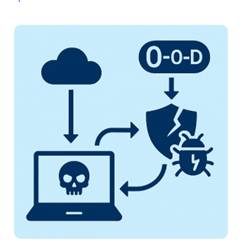AN INVESTIGATION INTO THE APPLICATION OF DEEP CONVOLUTIONAL NEURAL NETWORKS FOR MALWARE DETECTION
DOI:
https://doi.org/10.71146/kjmr409Keywords:
Malware Detection, Deep neural networks, Malware Detection, Deep neural networks, CNN, Cyber Security, Cyber SecurityAbstract
Cyber security is facing a huge threat from malwares motivator and their mass production due to its mutation factors, which results in enormous production of these binaries in short time. Moreover, the domain of malicious intents is also progressing with the increase of compute intensive resources. To detect and highlight these malicious binaries, classification plays a vital rule in listing these malwares as malware by nominating interesting features and trends among them. In this situation, we investigated the application of transfer learning using the EfficientNetV2 architecture for automated malware family classification on the Malimg dataset. Our experiments use a stratified 70/15/15 split for training, validation, and testing. The final model achieves 98.4 % test accuracy, with a macro‑averaged F1‑score of 0.983, precision of 0.985, and recall of 0.982. Using the concept of visualization of malware byte-code, proved more convenient to classify them by object recognition techniques in deep convolutional neural networks. The approach can be readily extended to other cybersecurity datasets and deployed in real‑time detection scenarios, suggesting a promising direction for future research in automated threat analysis
Downloads

Downloads
Published
Issue
Section
License
Copyright (c) 2025 Mamoona Rafique Khan , Rana Muhammad Nadeem, Sadia Latif, Rabia Tariq (Author)

This work is licensed under a Creative Commons Attribution 4.0 International License.






